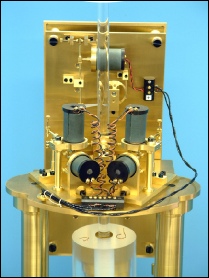
Precision Horology
Q2 MOVEMENT
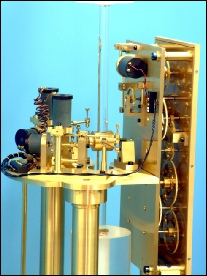
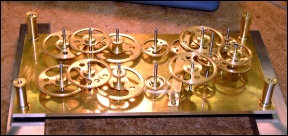

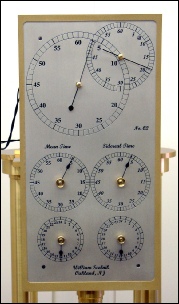
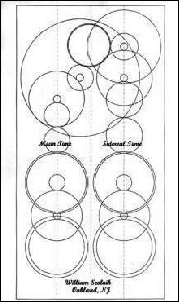
The clock really consists of two movements, one which operates the pendulum and one
which operates the dial work. In a normal clock, both of these functions are all
contained in one “movement” The movement operating the pendulum can be seen in the
photographs at the top right and left. The pendulum is supported by a trunnion through
which the pendulum rod extends. The trunnion is supported by a pair of cross spring
suspensions (C-
All of return springs used in the movement are C-
are dropped alternately on these pallets to keep the pendulum in motion.
The movement operating the motion work (hands) indicates mean time – hours, minutes
and seconds – as well as sidereal time – hours, minutes and seconds. The 8 pinions
and 16 gears gears are all driven from one ‘scape wheel which is impulsed by a specially
designed form of solenoid. The solenoid receives an impulse once a second from the
pendulum movement.
The dial is solid silver which has been chemically etched to form the chapter rings and numerals which have been filled with black enamel. All of the pivots run in miniature ball bearings to minimize friction.

The trunnion supporting the pendulums showing the two impulse arms with small circular hardened steel pallets. This is the original version using knife edges which was subsequently changed to x springs
(ABOVE)The dial movement showing both gear trains for mean and sidereal time. The impulsing solenoid is on the back plate and cannot be seen .
(BELOW) The hammer impulse mechanism.
When I designed the movement I used a program called Delta Cad to lay it out.
Silver dial with large seconds bits . The dial is quite perfect but the photo doesn’t show it
